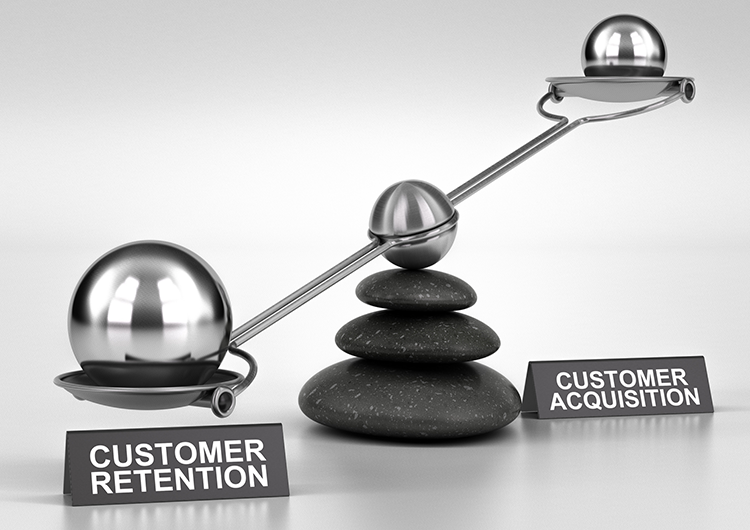
Asking what’s more important, customer acquisition or customer retention, is like asking what came first, the chicken or the egg. It’s an age-old marketing question that will continue to spark debate. The truth is, at any given moment, a business may skew one way or another, depending on their current situation, business goals and position in the market. To fully understand this dynamic we need to look to the funnel.
The Sales Funnel
Picture a snow cone—any flavor you like. The very top of the cone is the widest. As you move down towards the bottom, it becomes increasingly narrow. The top of the funnel represents the awareness phase with the greatest number of potential customers. So it should come as no surprise that businesses and marketers spend a great deal of time and money trying to cast a wide net to catch as much of this broad audience as they can. However, what they don’t realize is as they focus all of their resources on acquiring new customers at the top of the funnel, some of their existing customers are feeling ignored and abandoned at the bottom—causing many of them to jump ship.
Two Sides to Every Marketing Story
It costs five times more to attract a new customer than to keep an existing one. Increasing customer retention rates by just 5% can result in increased profits of 25% to 95%. These are two of the most widely published statistics regarding acquisition and retention. With these staggering numbers, it seems obvious that retaining existing customers is much less expensive than acquiring new ones. So why aren’t more marketers focusing their efforts on retention? Let’s go back to the funnel.
It’s hard for many businesses to resist the allure of trying to capture all of those shiny new customers at the top of the funnel, but an even bigger reason is that businesses must first get customers before they can keep them—so acquisition isn’t only important, but essential. The ideal formula is to employ a combination of marketing efforts for both acquisition and retention. The question then becomes, what’s the best way to strike the perfect balance?
Start at the Top
For new businesses, it makes sense that they focus on acquisition in order to “build up” their customer base before they work on retention efforts. This is the fastest way to grow a new business and reach short-term revenue goals. Inbound marketing tools, such as blogs, videos and social media, are a great way to attract qualified leads and convert them into customers for this segment.
The Next Step
Once a business has a solid customer base, it’s important to work on retaining those existing customers, while still continuing to push acquisition strategies for new customers. How do you retain them?
- Stay in touch with them on a regular basis through the channels that they prefer, including email, social media, direct mail, or personal follow-up.
- Engage them with surveys that allow them to genuinely and confidentially give you feedback.
- Offer them something special every once in a while — a discount, a coupon, an invitation to an event, or something else that they will appreciate. Unexpected and thoughtful gestures go a long way.
- Say thank you. Everyone appreciates that.
- Train anyone who has direct contact with your customers. They must be able to make the customer experience exceptional every step of the way, even during difficult interactions.
When you get retention right, you turn your customers into raving fans who promote you to their own personal networks. And that’s marketing gold.
Think about it. How often have you bought a product or chosen a service provider solely based on the recommendation of a colleague, family or friend?
The Bottom Line
Acquisition and retention are like peanut butter and jelly. Both are good on their own, but they’re even better together. There is no one-size-fits-all formula for how to balance them; it really depends on many factors that are unique to each business. The one thing to keep in mind is that retention and acquisition are not mutually exclusive. Customer referrals, testimonials and case studies, all signs of high retention, can actually help drive acquisition.


Comments